
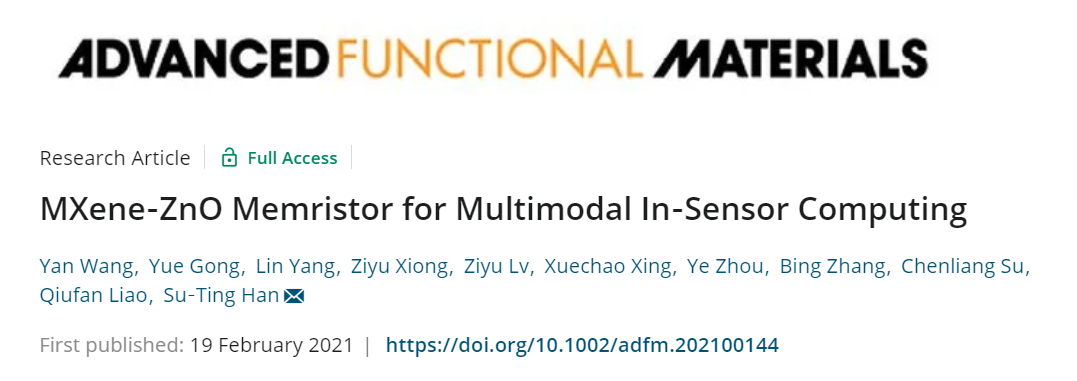
1. Article overview
Recently, it has been proposed to use a single sensor or multiple connected sensors to directly perform internal calculations in the sensor to improve the utilization of energy, area and time efficiency of the artificial intelligence system. Current research mainly focuses on single sensory processing, such as hearing, sight, touch and smell. However, the human perception system can simultaneously perceive and process different types of information in a complex environment and a small perception range. For example, the recognition accuracy of human eyes is affected by environments such as extremely low or extremely high relative humidity (RH). Based on this, this paper designs and constructs a multi-mode MXene-ZnO memristor, which combines visual data sensing, RH sensing and preprocessing functions to simulate the unique environmental adaptation behavior of the human eye. (1) The multi-field controlled resistance conversion of the MXene-ZnO memristor is derived from the formation of photon/proton-regulated oxygen vacancy filaments. (2) Finally, the in-sensor calculation function of the MXene-ZnO memristor is verified. The filter can preprocess the information, and can also realize the weight update process with different humidity adaptability through synapses. The calculation within the multi-mode sensor provides the potential to reduce the complexity of the underlying circuitry of the traditional neuromorphic vision system, and contributes to the development of intelligence in device-level implementations.
Two, graphic guide
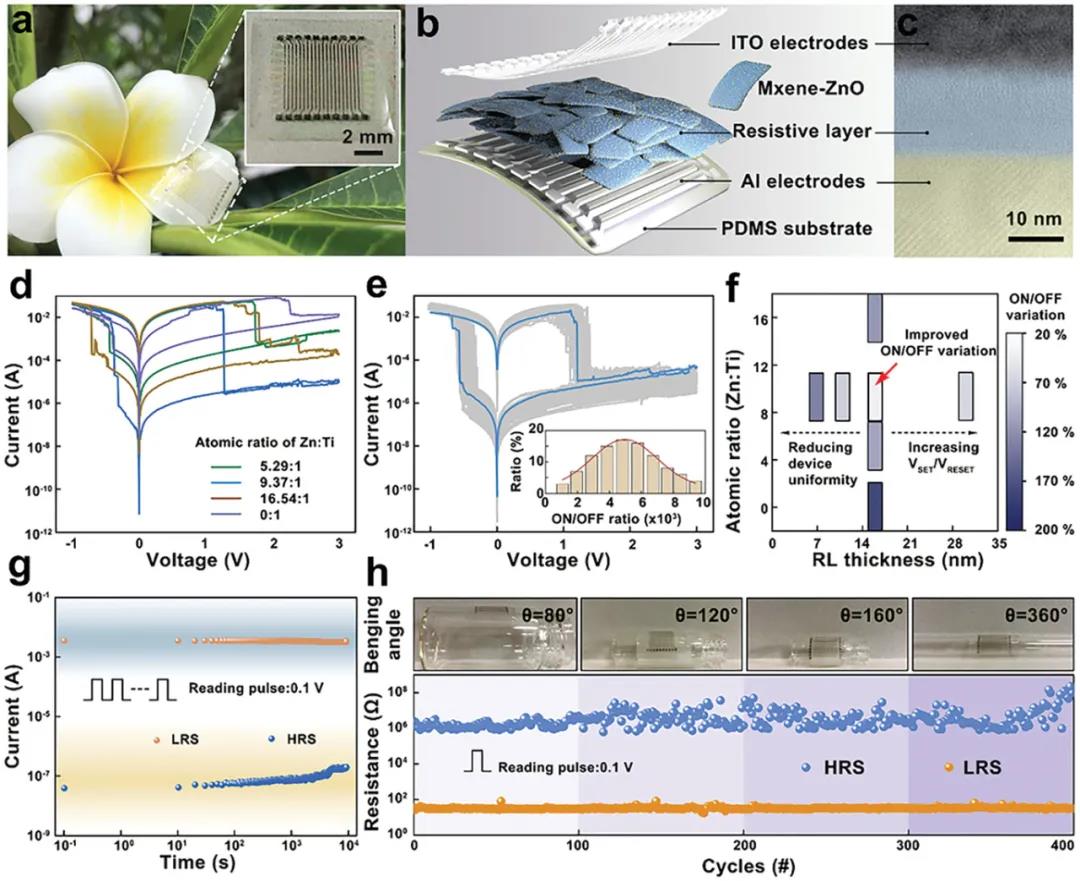
Flexible electrical characteristics of MXene-ZnO-based memristor arrays.
a) Photograph of flexible memristor array on flower.
b) Schematic diagram of a flexible memristive device.
c) Cross-sectional TEM image of the prepared ITO/MXene-ZnO/Al device.
d) IV characteristics of memristive devices with different atomic ratios between zinc and titanium.
e) The resistance switching characteristics of the memristor device with the statistical on/off ratio distribution shown in the illustration.
f) The spatial variation of the on/off ratio varies with the atomic ratio (Zn:Ti) and the thickness of the RL.
g) The retention capacity of the corresponding HRS and LRS measured under dark conditions.
h) Relative to the different curvatures of the memristor, the ON current in LRS and the OFF current in HRS.
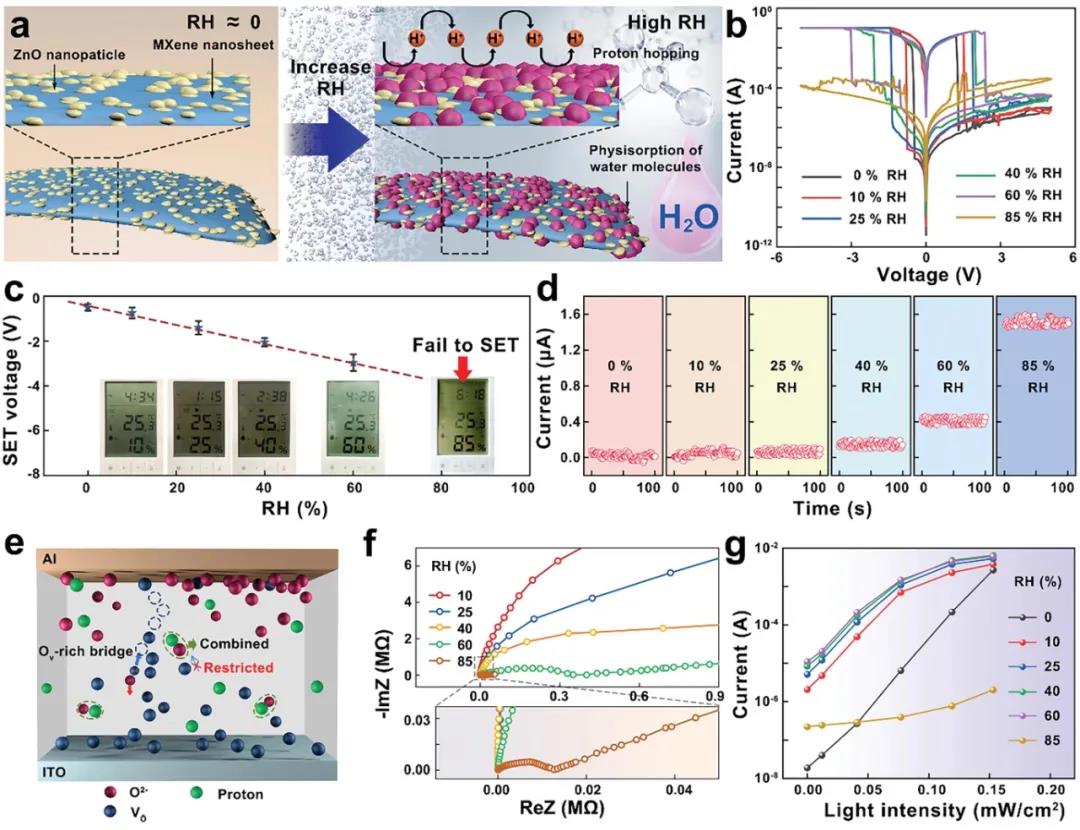
Humidity-mediated resistance switching characteristics.
a) Schematic diagram of the adsorption process of water molecules on the surface of MXene-ZnO heterojunction in a high RH environment.
b) The relationship between the typical I-V curve of the memristor based on MXene-ZnO and the RH condition.
c) VSET for RH conditions measured in the dark.
d) The fluctuation of HRS current measured at different relative humidity levels.
e) Schematic diagram of the proton-mediated resistance conversion mechanism.
f) Impedance diagram of MXene-ZnO film at different RH levels.
g) Current response of the memristor with respect to optical illuminance and RH level.
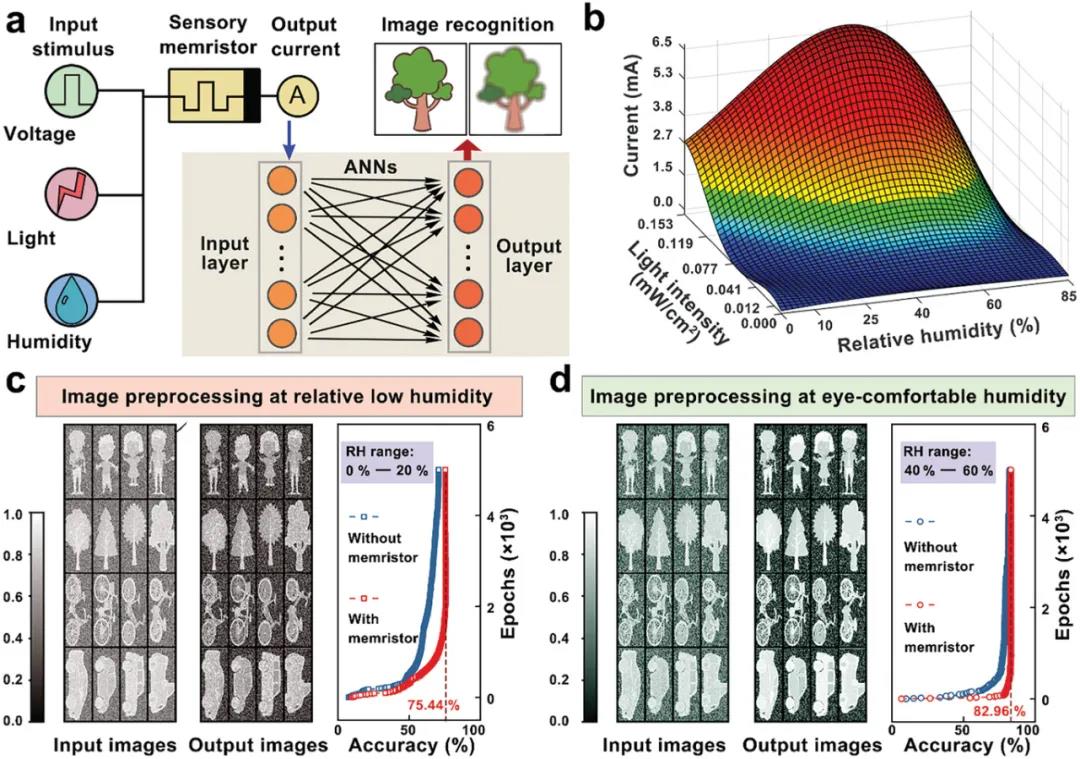
Image recognition in neuromorphic vision system based on multi-field tunable memristor, and has visual clarity related to RH.
a) Schematic diagram of low-level processing in the sensor by using MXene-ZnO memristor to sense information, suppress/filter noise and specialize functions.
b) The current in the memristor based on MXene-ZnO is a function of RH and light.
Input image recognition for contrast enhancement and noise reduction of artificial retina sensing system under c) low humidity conditions and d) eye comfortable humidity conditions.
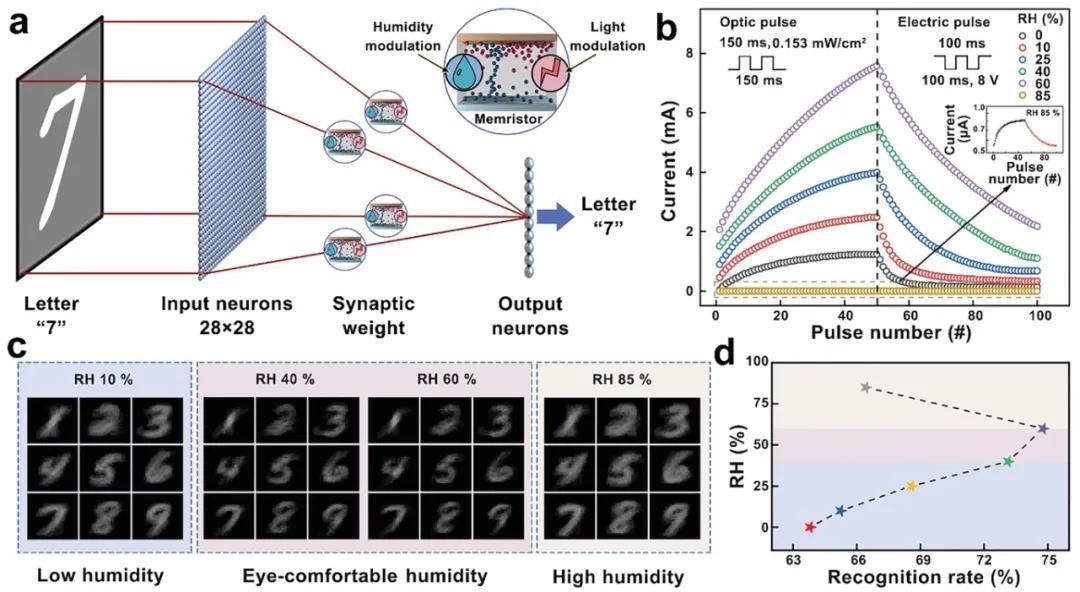
Use the realized memristor device for real-time training of image recognition.
a) A schematic diagram of advanced in-sensor calculations by using sensing memristors as synapses to achieve weight updates.
b) The RH-mediated plasticity of the sensing memristor exhibits long-term enhancement characteristics when 50 light pulses are applied, and long-term inhibition characteristics when 50 electrical pulses are applied.
c) After 60,000 training cycles, output images for the sensing memristor at different RH levels.
d) The recognition rate is a function of the relative humidity level.
3. Thesis information
MXene-ZnO Memristor for Multimodal In-Sensor Computing
Advanced Functional Materials (IF=16.836)
Pub Date: 2021-02-19
DOI: 10.1002/adfm.202100144
Yan Wang; Yue Gong; Lin Yang; Ziyu Xiong; Ziyu Lv; Xuechao Xing; Ye Zhou; Bing Zhang; Chenliang Su; Qiufan Liao; Su-Ting Han*
Institute of Microscale Optoelectronics, Shenzhen University, Shenzhen, 518060 P. R. China
Information source: scientific research
This information is from the Internet for academic exchanges. If there is any infringement, please contact us and delete it immediately







